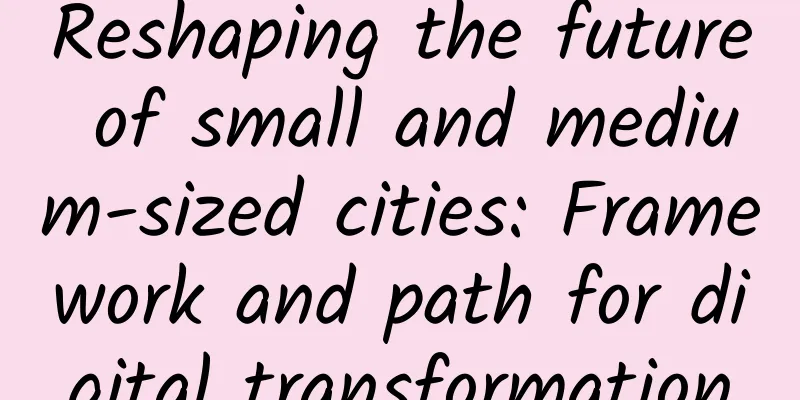Reshaping the future of small and medium-sized cities: Framework and path for digital transformation

|
The insight report "Reshaping the Future of Small and Medium-sized Cities: Framework and Path for Digital Transformation" (hereinafter referred to as the report) was officially released on May 9, 2022. This is the result of 10 months of research by the World Economic Forum and Tencent Research Institute . It is also the first time that the World Economic Forum and the G20 Global Smart Cities Alliance have focused on the topic of digital transformation of small and medium-sized cities around the world. Report Summary Through research and interviews, the report analyzes the challenges, needs and concerns faced by small and medium-sized cities in China, Japan, Brazil and other countries in digital transformation, proposes a methodological reference model for the digital transformation of small and medium-sized cities, provides reference cases in China and Japan, and puts forward action recommendations for various stakeholders in the city. –The challenges of digital transformation in small and medium-sized cities are mainly reflected in the following aspects: lack of digital talents, insufficient funds and resources, lack of understanding and application of digital technology, lack of interaction and cooperation mechanisms among cities, etc. – The digital transformation of small and medium-sized cities should adopt a combination of “commonalities + characteristics”. In addition, the differences between small and medium-sized cities and large cities should be taken into consideration in the planning and promotion of the digital transformation of small and medium-sized cities. – The digital transformation of small and medium-sized cities can be divided into seven areas: people’s livelihood and services, industry and economy, governance and operation, environment and low carbon, government effectiveness, infrastructure, and development guarantee (leadership / policy) . Each area can be divided into three maturity levels. In specific planning and implementation, small and medium-sized cities can combine their respective resource endowments, industrial characteristics and development goals, and refer to the methodological panorama of the digital transformation of small and medium-sized cities - that is, the key feature matrix of digital transformation in seven functional areas in three stages ( 7*3 matrix) , to propose their own digital transformation entry points and paths. – To achieve digital transformation in small and medium-sized cities, governments, businesses, research institutions and citizens need to work in a coordinated and joint manner. The PDF version will be shared on 199IT Knowledge Planet, just scan the QR code below! |
>>: ClubIntel: The impact of Generation Y and Generation Z on the fitness industry
Recommend
Five essential data analysis methods for data operations
Last time we talked about how, when locking in th...
Baidu information flow account opening, Baidu information flow display
Baidu information flow account opening generally ...
How to advertise on Weibo? What are the methods of Weibo promotion?
Weibo is one of the most popular and active socia...
The indestructible cockroach turns into a "cyborg cockroach"? Please allow me to respectfully call him Brother Qiang
Cockroaches, commonly known as "xiaoqiang&qu...
May Day holiday arrangement 2022: Which specific day will classes be made up for May Day? Which shift last week did you take off? Attached is the latest notice!
The May Day is just a few days away. According to ...
Apple internal document introduces Apple SIM card: one card with multiple numbers
After the launch of the new iPad in October, Appl...
There are many risks behind "exotic pets" such as macaques and white foxes. Have you raised any?
China Science Popularization Network (Reporter Hu...
Learn how to set up SEM search bidding flash in 10 minutes
When I first entered the industry, I was in a hur...
How to design an online traffic-generating activity from scratch?
I was slapped in the face by Double 11. I think t...
How do astronauts use electricity in space?
At 9:22 on June 17, astronauts Nie Haisheng, Liu ...
Wuwei Investment Forum: How to Find a Good and Competitive Company
Wuwei Investment Forum "How to Find a Good C...
The whole story of the suspension of LeEco's supercar Faraday factory: illusion, bubble, scam and the driving force behind it
North Las Vegas, Nevada. Although it has a North ...
Microsoft shows off its weird Silent Voice technology
Microsoft is working on a new voice input interfa...
Only through cooperation can the smart home cake be expanded
The world is so amazing that you never know it. W...
SEM small search delivery guide: bidding small channels
In SEM, there are five main promotion channels: B...









